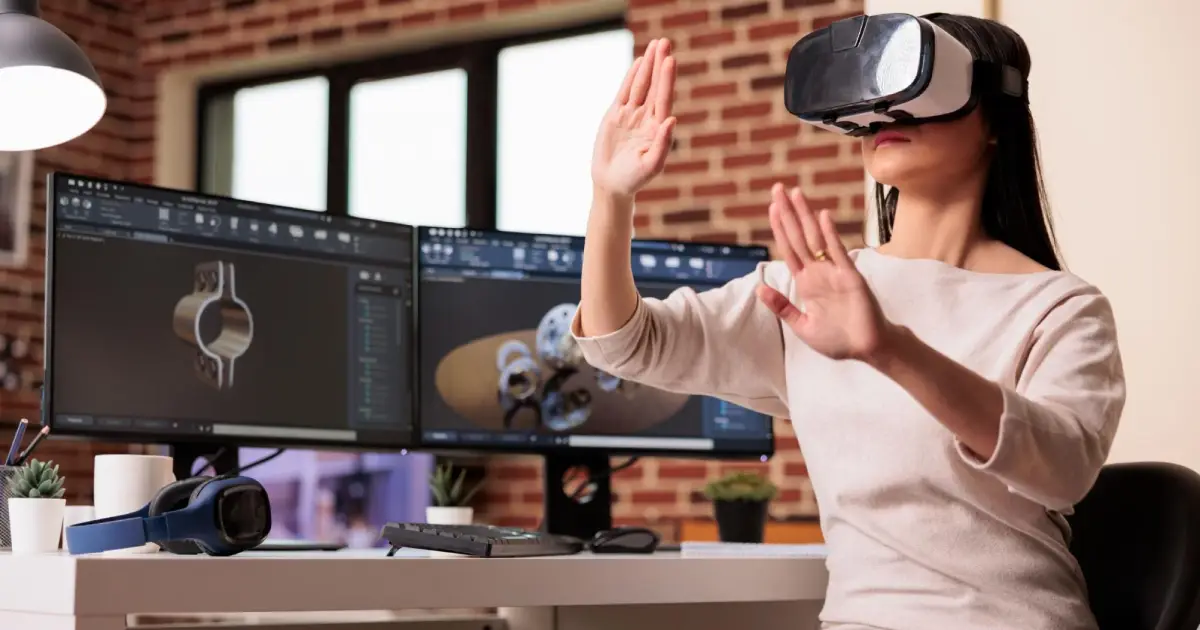In today's fast-paced world, where technology continues to evolve at an exponential rate, various industries are embracing innovative solutions to enhance their processes and deliver exceptional results. One such industry is architectural design, which has witnessed a significant transformation with the integration of virtual reality (VR) technology. This article explores the impact of virtual reality on architectural design, specifically catering to individuals seeking professional assistance to optimise and enhance their interior design, creating a stylish and practical living environment while valuing timely project execution and effective project management.
Virtual reality technology offers a multitude of benefits to architects, interior designers, and homeowners alike. By leveraging VR, professional architectural designers can provide their clients with a realistic and immersive experience, enabling them to visualise and interact with their future living spaces even before construction begins. Let's delve into some key advantages of integrating virtual reality into architectural design.
Virtual reality enables clients to step inside a virtual representation of their desired living space. By putting on a VR headset, they can explore every nook and cranny, walk through rooms, and even make design modifications in real time. This immersive experience enhances visualisation and allows for effective communication between the designer and the client, ensuring a shared understanding of the project goals.
Traditional architectural design often involves creating multiple iterations of blueprints and 2D renderings, which can be time-consuming and challenging to comprehend for clients without a design background. Virtual reality streamlines the design process by providing an interactive 3D environment where clients can offer feedback, make adjustments, and witness the immediate impact of their decisions. This iterative approach saves time, minimises errors, and enhances client satisfaction.
One of the greatest challenges in architectural design is accurately perceiving spatial relationships. Floor plans and static renderings often fall short of providing an accurate representation of space. Virtual reality fills this gap by allowing users to experience scale, depth, and proportions within a 3D environment. Clients can better understand spatial configurations, ensuring that the final design aligns with their expectations.
Virtual reality enables the realistic simulation of materials, textures, and lighting conditions, providing clients with an accurate representation of the final aesthetic. By immersing themselves in the virtual environment, clients can assess how different materials and lighting choices impact the ambience and overall appeal of their living spaces. This feature empowers clients to make informed decisions and ensures a cohesive design outcome.
By utilising virtual reality technology, architectural design firms can optimise their project timelines and reduce costs associated with design revisions and construction errors. Early detection of design flaws, improved communication, and effective collaboration among stakeholders minimise the risk of expensive rework during the construction phase. This streamlined process translates into significant cost and time savings for both the client and the design team.
The impact of virtual reality on architectural design is undeniable, revolutionising the way designers conceptualise, present, and execute their projects. When considering the customer persona mentioned earlier—someone seeking professional assistance to optimise and enhance their interior design, desiring a stylish and practical living environment, and valuing timely project execution and effective project management—the integration of virtual reality aligns perfectly with their needs.
building contractors and designers who embrace virtual reality technology demonstrate their experience, expertise, and authority in delivering exceptional outcomes. By utilising VR as a tool to engage clients and provide unparalleled visualisation, these professionals establish trust and credibility among their target audience.
Moreover, the implementation of virtual reality showcases a commitment to staying at the forefront of technological advancements. This willingness to adopt innovative solutions not only attracts clients seeking cutting-edge design experiences but also sets the stage for continued growth and competitiveness in the industry.
Virtual reality benefits interior design professionals by enabling them to create immersive and realistic experiences for their clients. It enhances communication, facilitates design iterations, and ensures accurate spatial perception, resulting in improved project outcomes and client satisfaction.
Yes, virtual reality allows you to visualise different materials, textures, and lighting conditions within a 3D environment. This helps you make informed decisions about the materials that best suit your desired aesthetic and ensures a cohesive design outcome.
Absolutely! Virtual reality streamlines the design process by minimising errors, facilitating communication, and enabling efficient design iterations. Early detection of design flaws and effective collaboration among stakeholders help reduce costly rework, saving both time and money.
Virtual reality enhances the customer experience by providing an immersive and interactive platform for clients to explore their future living spaces. It allows them to visualise the design, makes real-time modifications, and actively participate in the decision-making process, resulting in a higher level of satisfaction.
While virtual reality is rapidly gaining popularity in the architectural design industry, its adoption varies among professionals and firms. However, its numerous benefits and the increasing availability of VR technology make it an attractive and valuable tool for design professionals looking to deliver exceptional results.
To find an architectural design firm that utilises virtual reality, it is advisable to conduct thorough research and inquire about its technological capabilities. Look for firms that highlight virtual reality in their portfolio, testimonials, or service offerings, as these are indicators of their utilisation of VR technology.
The integration of virtual reality technology in architectural design has revolutionised the industry, empowering professionals to provide clients with enhanced visualisation, efficient design iterations, accurate spatial perception, and cost savings. For individuals seeking professional assistance to optimise and enhance their interior design, virtual reality offers a powerful solution to create stylish and practical living environments.
